Master the Green Thumb with Gardening Basics for Dummies is a comprehensive guide to gardening success, providing all the know-how needed to transform an ordinary backyard into a beautiful garden. Whether you’re a beginner or an experienced gardener, this book offers practical advice and helpful tips to make your gardening journey a success. Written by experts from the National Gardening Association, this guide covers all the gardening basics, from understanding plant hardiness zones to choosing the right fertilizer for your garden needs.
Key Takeaways
- Gardening Basics for Dummies is a comprehensive guide suitable for both beginners and experienced gardeners.
- The book covers essential gardening tips such as soil preparation, plant care, and plant selection.
- Readers can learn how to create a beautiful landscape, grow their own vegetables, and troubleshoot common gardening issues with ease.
- The book also emphasizes the importance of sustainable gardening practices and expanding one’s gardening knowledge beyond the basics.
A Beginner’s Guide to Gardening
If you’re new to gardening, fear not! This beginner’s guide will walk you through the fundamental steps of creating and maintaining a thriving garden. First and foremost, it’s important to understand the basics of gardening. This includes identifying the specific needs of your plants, preparing the soil, and understanding the importance of water and sunlight. Gardening can be a rewarding and enjoyable hobby, but it does require some patience and dedication.
Gardening Basics 101
Before you even begin planting, it’s important to evaluate your garden’s current condition. Start by determining the amount of sunlight your garden receives each day. Some plants thrive in full sun, while others prefer partial or full shade. Next, assess the quality of your soil. Is it sandy or clay-like? Does it drain well, or does it retain water? These factors will help you determine which plants will grow best in your garden.
Once you’ve assessed your garden’s conditions, it’s time to start preparing the soil. This involves removing any weeds or debris, tilling the soil to loosen it up, and adding amendments such as compost or fertilizer to provide the necessary nutrients for your plants. Make sure to also water the soil thoroughly before planting to ensure that the roots have enough moisture.
Getting Started with Gardening
When it comes to selecting plants, it’s important to choose varieties that are suitable for your climate and growing conditions. Consider factors such as your hardiness zone, the amount of sunlight your garden receives, and the type of soil you have. It’s also a good idea to choose a mix of annuals and perennials to provide color and texture throughout the growing season.
Once you’ve selected your plants, it’s time to start planting. Make sure to follow the recommended planting instructions for each variety and space them out accordingly to allow for growth. Water your plants regularly, and monitor them for signs of pests or disease.
Essential Gardening Tips
As you begin your gardening journey, there are a few essential tips to keep in mind. Firstly, make sure to weed your garden regularly to prevent them from competing with your plants for resources. Secondly, consider adding mulch to help retain moisture, regulate soil temperature, and suppress weed growth. Finally, be patient and flexible. Gardening is a learning process, and not all plants will thrive in your garden. Don’t be afraid to experiment and try new things.
A Beginner’s Guide to Gardening is just the beginning of your gardening journey. With a little bit of knowledge and a lot of love, you’ll be able to create a beautiful and thriving garden that you can be proud of.
Creating a Beautiful Landscape
Designing a beautiful landscape is an essential part of creating an inviting garden space, and this section will show you how to do it with ease. Whether you’re starting from scratch or revamping an existing garden, proper gardening techniques and plant selection are key.
When it comes to landscaping, it’s important to know how to differentiate between plants. The National Gardening Association provides a wealth of information and resources for home gardeners. Books such as “Landscaping For Dummies” offer step-by-step guidance on various landscaping topics, including selecting plants and arranging them for maximum visual appeal.
| Tip: | When selecting plants for your garden, consider their characteristics such as color, texture, and size. Placing taller plants at the back of a border and smaller ones towards the front will provide depth and visual interest. |
|---|
Identifying plants is also an essential part of creating a beautiful landscape. Knowing the different types of plants and their unique needs can help you determine the best placement and care for each one. Books such as “Plant Identification For Dummies” offer comprehensive information on plant identification and differentiation.
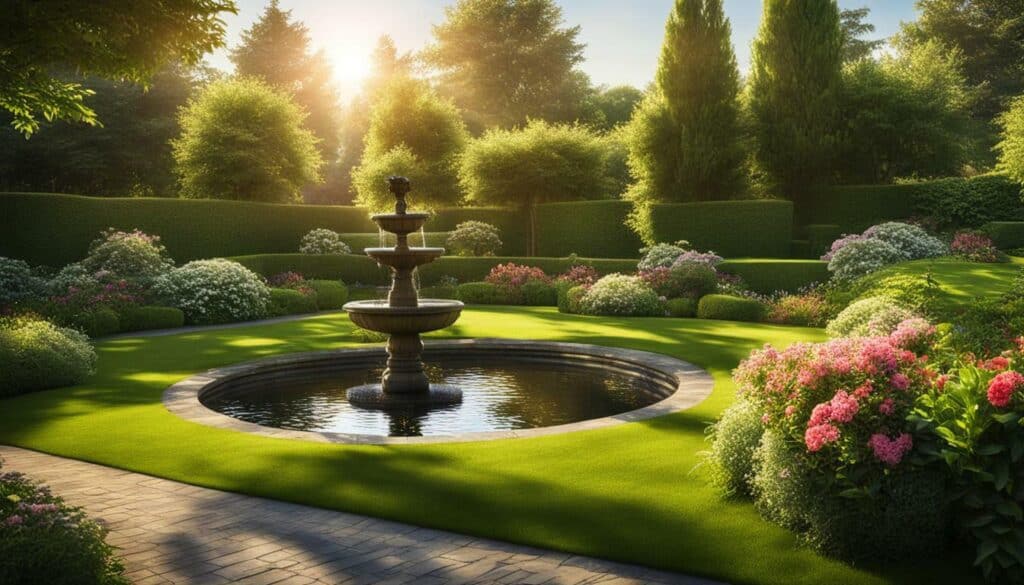
When planning a garden, it’s important to consider your hardiness zone to determine the best plants for the climate. Gardening Basics For Dummies” provides guidance on how to determine your zone and suggests plants that thrive in different climates. By choosing plants that are suited to your climate, you’ll have a greater chance of success in creating a beautiful landscape.
In addition to plant selection, fertilizers can also provide a boost to plant growth and help create a beautiful landscape. “Gardening Basics For Dummies” offers guidance on selecting the right fertilizers for different plants and soil types, as well as tips on applying fertilizers effectively.
With the right knowledge and care, anyone can create a beautiful landscape and enjoy the fruits of their labor. Landscaping For Dummies” and “Gardening Basics For Dummies” are great resources to help you get started and achieve your gardening goals.
Choosing Plants for Your Climate
To ensure the success of your garden, it’s crucial to choose plants that are well-suited to your particular climate and growing conditions. Knowing your hardiness zone is the first step in determining which plants will thrive in your area. The USDA hardiness zone chart provides information on the minimum temperature and frost dates for each zone, and can be found online or at your local nursery.
It’s also important to consider the length of your growing season when selecting plants. Some plants require a long growing season to reach maturity and produce fruit, while others can be harvested in a shorter period. When planning your garden, be sure to choose plants that can be grown within the length of your growing season.
In addition to climate considerations, it’s important to have the right measurements when planning your garden. A conversion chart for metric and standard measurements can be helpful in this regard, and can be easily found online.
For shady gardens, there are plenty of plants that thrive in the shade, such as wax begonias, impatiens, and hostas. These plants can add color and variety to a garden that doesn’t receive full sun.
Finally, understanding different types of fertilizers can enhance the growth of your plants. Complete fertilizers contain nitrogen, phosphorus, and potassium, while organic fertilizers derive their nutrients from organic materials. Slow-release fertilizers provide nutrients over an extended period, and foliar fertilizers can be applied to leaves instead of roots for faster absorption. By selecting the right plants and providing optimal care based on your climate, your garden will thrive and produce a bountiful harvest.
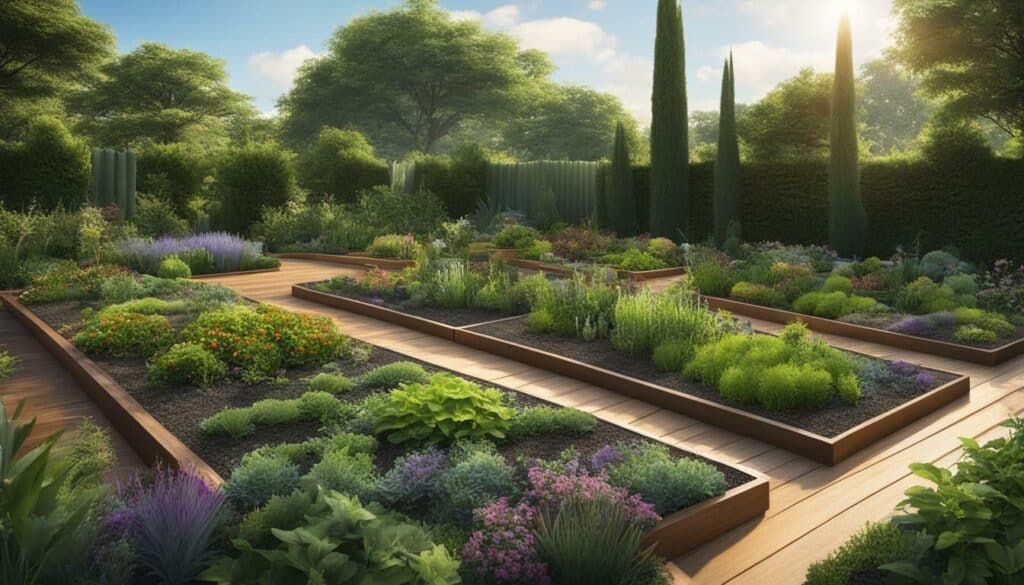
Growing Your Own Vegetables
Imagine the satisfaction of enjoying fresh, homegrown vegetables straight from your own garden – this section will help you turn that dream into a reality. With the help of Vegetable Gardening For Dummies and other resources, you can learn how to grow your own vegetables and experience the joy of harvesting and cooking with fresh produce.
Before you start planting, it’s important to plan your garden. Consider the amount of sunlight and water your plants will need, as well as the amount of space you have available. Choose vegetables that are suited for your climate and soil type. Some easy-to-grow options include tomatoes, lettuce, carrots, and cucumbers.
| Tip | Make sure your garden receives at least six hours of sunlight a day. |
|---|---|
| Ensure your soil is well-draining and rich in organic matter to promote healthy plant growth. |
Once you’ve planned your garden, it’s time to plant your seeds or young plants. Follow the instructions on the seed packet or plant label for proper spacing and depth. Water your plants regularly and keep an eye out for pests or diseases.

As your vegetables grow, be sure to provide support for taller plants like tomatoes and beans. You can use stakes or trellises to keep them upright and promote healthy growth. Regularly weed your garden to prevent competition for nutrients and apply fertilizers as needed to promote growth.
When your vegetables are ready to harvest, pick them as soon as they’re ripe. This will help promote continued growth and prevent over-ripening. Some vegetables, like tomatoes and peppers, will continue to ripen after being picked, while others, like lettuce and radishes, should be harvested when fully mature.
With a little time and effort, you can enjoy the rewards of growing your own vegetables. Whether you have a small container garden or a large plot of land, the satisfaction of harvesting your own fresh produce is truly unparalleled.
The Art of Pruning
Pruning is a crucial skill for any gardener, and this section will demystify the art of pruning, helping you keep your plants healthy and well-shaped. It involves removing certain branches or parts of the plant to promote healthy growth and optimal appearance. But don’t worry, with the right knowledge and techniques, pruning can be a simple and enjoyable activity.
The National Gardening Association is an excellent resource for gardening know-how and offers guidance on pruning and other gardening techniques. They can help you master the basics of pruning, including understanding the plant’s needs and identifying which branches to remove. Additionally, various books, such as “Landscaping for Dummies” and “Perennials for Dummies,” provide comprehensive information on pruning and other aspects of gardening.
Understanding plant hardiness zones is crucial for selecting the right plants for your garden. It ensures that you choose plants that can survive and thrive in your climate. Different plants require different pruning techniques, and knowing which ones to use ensures that your plants stay healthy and well-shaped.
It’s also essential to select shade-tolerant plants if your garden has limited sunlight. These types of plants require less pruning and are easier to maintain. Using the right fertilizers is another important factor for successful pruning and overall garden maintenance. Selecting the right fertilizer for your plants can help them grow stronger and healthier, reducing the need for as much pruning.
When it comes to pruning, it’s important not to overdo it. Pruning too much can stunt the plant’s growth and make it more susceptible to disease and pests. It’s also important to use the right tools for the job, such as clean, sharp shears, loppers, and pruning saws. Knowing when to prune is just as important as knowing how to prune. It’s best to prune in the spring or winter when plants are dormant, allowing them to recover before the growing season begins.
In conclusion, pruning is a valuable skill for any gardener looking to keep their plants healthy and well-shaped. With the right knowledge and techniques, pruning can be an easy and enjoyable task. Understanding plant hardiness zones, selecting shade-tolerant plants, and using the right fertilizers are all important factors for successful pruning and overall garden maintenance. So, grab your tools and happy pruning!
Nurturing Your Garden with Fertilizers
Just like we need proper nutrition to thrive, your garden plants also require the right balance of nutrients to reach their full potential – and choosing the right fertilizers is key. Fertilizers can provide the essential nutrients that plants need to grow strong and healthy.
Complete fertilizers, which contain nitrogen, phosphorus, and potassium, are often the best choice for gardeners. Incomplete fertilizers may lack one or more of these macronutrients and can be less effective. Chelated micronutrients are another option for addressing deficiencies in iron, manganese, and zinc.
Organic fertilizers, such as compost and manure, provide a natural source of nutrients that can enrich the soil and promote healthy growth. Slow-release fertilizers are also available, providing nutrients to plants over a longer period of time. Foliar fertilizers, applied to leaves rather than roots, can also provide a boost of nutrients when plants need it most.
| Type of Fertilizer | Benefits |
|---|---|
| Complete | Provides all essential macronutrients |
| Incomplete | May lack one or more macronutrients |
| Chelated Micronutrients | Adds essential micronutrients like iron, manganese, and zinc |
| Organic | Natural source of nutrients for soil and plants |
| Slow-release | Provides nutrients over a longer period of time |
| Foliar | Applied to leaves for a quick boost of nutrients |
When selecting fertilizers, it’s important to read the labels carefully and understand the terminology. By choosing the right fertilizers, gardeners can give their plants the nutrients they need to thrive and produce beautiful blooms or a bountiful harvest.
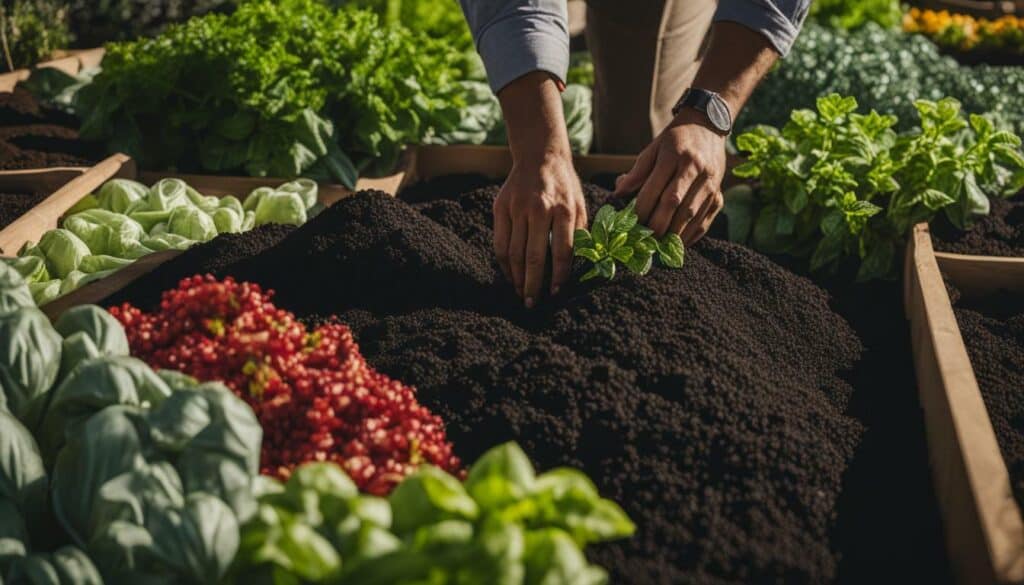
While gardening can be immensely rewarding, it’s not without its challenges – but fear not, as this section will equip you with the knowledge to overcome common gardening issues. Whether you’re a beginner or have some experience, troubleshooting problems in the garden is a crucial skill to develop.
1. Pests: Dealing with pests is an inevitable part of gardening. Common garden pests include aphids, snails, slugs, and caterpillars. To combat these pesky creatures, you can use natural remedies such as insecticidal soap, neem oil, or companion planting with pest-repellent plants.
2. Diseases: Plant diseases can quickly spread and damage your garden. Fungal diseases like powdery mildew and black spot, as well as bacterial infections, can cause wilting, discoloration, and stunted growth. To prevent and manage plant diseases, practice good sanitation, ensure proper watering, and use disease-resistant plant varieties.
3. Soil issues: Poor soil quality can hinder plant growth. Common soil issues include nutrient deficiencies, pH imbalance, and compacted soil. Conduct a soil test to determine any deficiencies and amend the soil accordingly with organic matter, compost, and fertilizers specific to your plant’s needs.
4. Lack of sunlight: If your garden receives limited sunlight, it can affect plant growth and flowering. Identify the areas in your garden that receive the most sunlight and choose plants that thrive in shade or partial shade. Some examples include impatiens, hostas, and columbines.
5. Overwatering or underwatering: Proper watering is essential for plant health. Overwatering can lead to root rot, while underwatering can cause dehydration and wilting. Monitor the moisture levels in your soil and water plants when the top inch of soil is dry. Use watering techniques such as drip irrigation or soaker hoses to ensure even distribution of water.
6. Weeds: Weeds can quickly take over a garden and compete with your plants for nutrients and sunlight. Regularly weed your garden by hand or use organic weed control methods like mulching or hoeing. Preventive measures such as landscape fabric or weed barriers can also help minimize weed growth.
Remember, gardening is a continuous learning process, and it’s normal to encounter challenges along the way. By being proactive and implementing proper garden maintenance practices, you can overcome common gardening issues and enjoy a healthy and thriving garden.
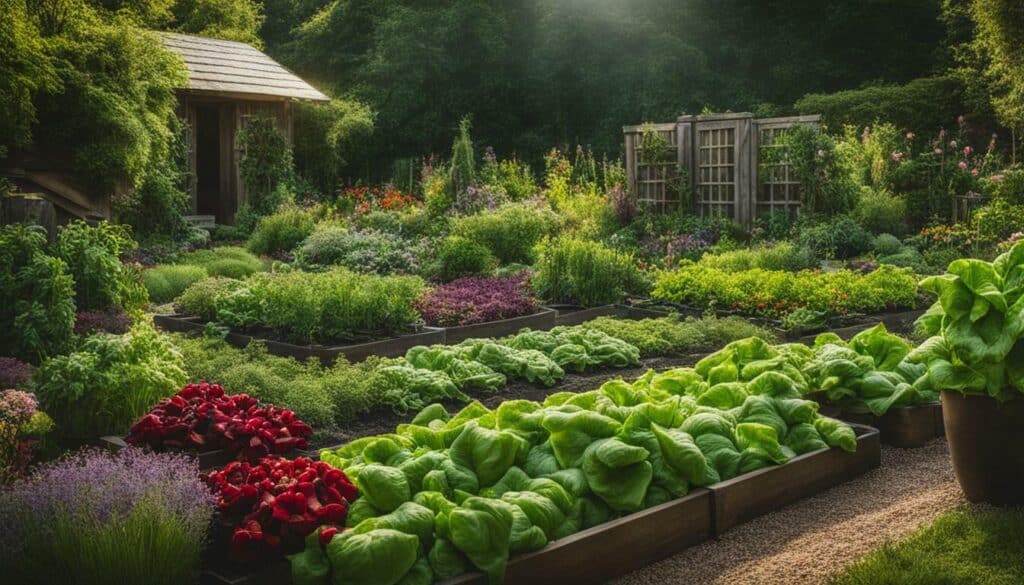
Source: Bobex-73 / Shutterstock.com
The Joys of Garden Companionship
Gardening is not just about plants – it’s a journey of self-discovery, relaxation, and finding solace in the natural world around us. It provides an opportunity to connect with nature and deepen our understanding of the environment.
Whether you’re a seasoned gardener or just starting out, there are many benefits to be gained from cultivating a garden. In addition to the satisfaction that comes from watching plants grow, gardening can also be a form of exercise, stress relief, and creative expression. It can also provide a sense of community, as gardening clubs and groups offer opportunities for like-minded individuals to connect and share their passion for gardening.
If you’re looking to deepen your knowledge and appreciation of gardening, there are many resources available to get you started. Landscaping For Dummies and Herb Gardening For Dummies are comprehensive guides that provide practical tips and advice for transforming your backyard into a lush garden oasis. Vegetable Gardening For Dummies focuses specifically on growing your own food and provides guidance on building soil, starting seeds, and maintaining your garden.
Knowing your USDA hardiness zone is also essential for selecting the right plants for your climate. By choosing plants that are well-suited to your local environment, you can ensure that your garden thrives and remains healthy throughout the growing season. Additionally, there are many plants that can thrive even in areas with limited sunlight, making it possible to create a beautiful garden regardless of the conditions.
Ultimately, the joys of garden companionship are many and varied. Whether you’re looking to create a peaceful retreat in your backyard, grow your own food, or simply connect with nature, gardening offers something for everyone. So why not start your own gardening journey today, and see where it takes you?
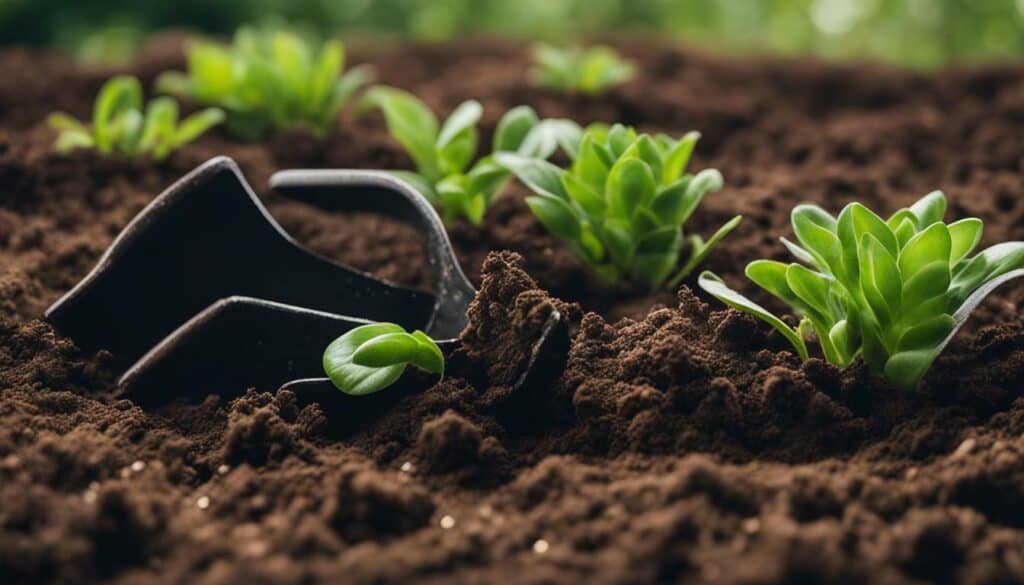
Sustainable Gardening Practices
As stewards of the land, it’s our responsibility to embrace sustainable gardening practices and create a greener future for generations to come. Sustainable gardening involves using environmentally-friendly techniques to maintain and cultivate a healthy and thriving garden.
To start, gardeners should choose plants that are suited to their specific climate and hardiness zone. This not only ensures that the plants will thrive, but it also reduces the need for excessive watering and fertilizing. When selecting plants, consider varieties that can tolerate shade, if necessary, and that are native to the region.
Conserving water is another crucial aspect of sustainable gardening. This can be achieved through the use of efficient irrigation systems, such as drip irrigation, and by collecting rainwater in barrels. Additionally, applying organic fertilizers and compost to the soil can reduce the need for synthetic fertilizers and promote healthy soil and plant growth.
Composting is another key component of sustainable gardening. Composting involves recycling organic materials such as food waste, grass clippings, and fallen leaves to create nutrient-rich soil. This reduces the amount of waste that ends up in landfills and provides a free source of fertilizer for the garden.
When planning the layout of your garden, it’s important to measure distances using the appropriate metric or standard measurements. This can help prevent over-planting and ensure that each plant has enough space to grow and thrive. Additionally, creating a diverse garden with a variety of plant species can help support a healthy ecosystem and attract beneficial insects.
Sustainable gardening practices aim to minimize the use of harmful chemicals and promote a healthy and eco-friendly garden environment. By using these techniques, gardeners can create beautiful and bountiful gardens while also doing their part to protect the planet.
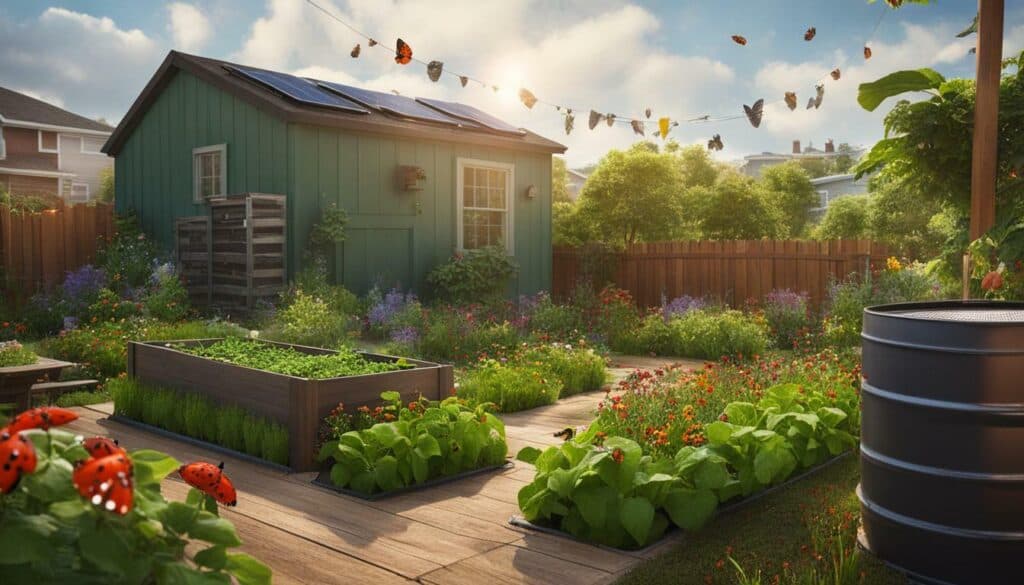
Expanding Your Gardening Knowledge
Once you’ve mastered the gardening basics, a whole world of knowledge and inspiration awaits – this section will point you in the right direction. As a beginner gardener, it’s important to continue expanding your gardening knowledge to enhance your skills and nurture your love for gardening. Luckily, there are numerous resources available to help you on your gardening journey.
Books and Websites
One of the best ways to learn more about gardening is to explore books and websites dedicated to the subject. These resources provide in-depth information, tips, and inspiration from experienced gardeners and horticulture experts.
“The new edition of Vegetable Gardening For Dummies puts you in touch with your roots in a thousands of years old farming tradition by demonstrating how easy it is to grow your own.”
Vegetable Gardening For Dummies is a comprehensive guide that offers step-by-step instructions on growing your own vegetables at home. It provides valuable insights from horticultural experts and covers everything from soil preparation to harvest.
Gardening Basics For Dummies is another great resource that covers a wide range of gardening topics, including plant care, landscaping, and troubleshooting common gardening issues. It offers practical advice and tips for beginners to help them navigate their gardening journey with confidence.
In addition to books, there are several reliable gardening websites that provide valuable information and resources for beginners. Websites such as the National Gardening Association’s website (www.garden.org) offer a wealth of articles, forums, and online tools to help you expand your gardening knowledge.
Local Gardening Clubs
Joining a local gardening club or association is a fantastic way to connect with fellow gardeners and learn from their experiences. These clubs often host workshops, garden tours, and educational events that can broaden your gardening knowledge and provide valuable insights from seasoned gardeners in your community.
Continuing Education Courses
Consider taking continuing education courses or workshops on gardening at local universities, community colleges, or botanical gardens. These courses offer hands-on experience and expert guidance on various gardening topics, allowing you to deepen your understanding and practical skills.
The Joy of Continuous Learning
Gardening is a lifelong learning process, and as you continue to expand your gardening knowledge, your skills and understanding will grow. Don’t be afraid to experiment, try new plants, and explore different gardening techniques. The more you learn, the more confident and successful you’ll become in your gardening endeavors.
Remember, gardening is not just about growing plants; it’s also about connecting with nature, finding joy in the process, and nurturing a sense of accomplishment. So, embrace the joy of continuous learning and explore the vast possibilities that the world of gardening has to offer!
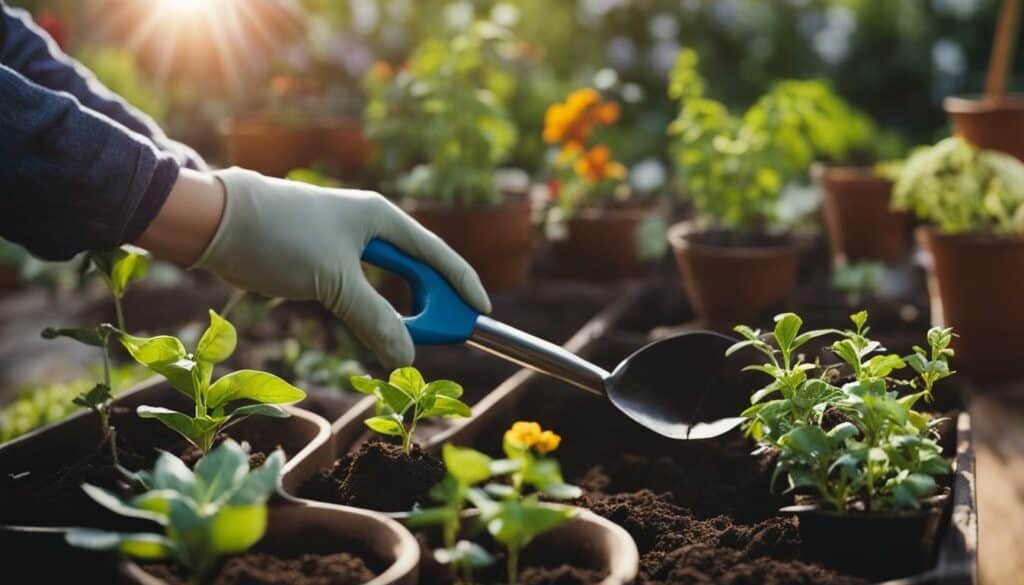
Whether you choose to dive into gardening books, join a local club, or enroll in courses, the key is to stay curious and open-minded. Gardening is a journey of discovery, and there’s always something new to learn. So, let your passion for gardening guide you as you continue to explore, grow, and create your own little piece of paradise.
Can I Learn the Basics of Gardening from Your Garden Tutorials?
Yes, absolutely! Our green thumb garden tutorials are designed specifically to help beginners learn the basics of gardening. Whether you’re interested in growing vegetables, herbs, or flowers, our tutorials cover various topics such as soil preparation, plant care, and pest control. With our step-by-step instructions and helpful tips, you’ll be able to develop your gardening skills in no time.
Congratulations on completing this comprehensive guide to gardening basics for dummies – now it’s time to put your newfound knowledge into action and watch your garden flourish.
Throughout this guide, we’ve covered everything you need to know to get started with gardening, whether you’re a complete beginner or an experienced gardener looking to brush up on the basics. From growing your own vegetables to mastering the art of pruning, we’ve explored the essential skills and techniques that will help you become a green thumb.
But our journey doesn’t end here. Gardening is a continuous learning process, and there’s always more to discover. As you embark on your gardening journey, remember to keep expanding your knowledge and exploring new techniques. Here are some tips to help you continue your gardening education:
1. Explore Additional Resources
Books, websites, and local gardening clubs are all valuable resources that can help you deepen your understanding of gardening. Look for reputable sources that offer reliable and up-to-date information to expand your knowledge.
2. Experiment with Different Plants
Don’t be afraid to step out of your comfort zone and try growing new plants. Experimenting with different varieties and species can provide you with valuable insights and help you discover new favorites for your garden.
3. Connect with Other Gardeners
Joining a local gardening club or online gardening community can provide you with a platform to connect with other gardeners. Sharing experiences, tips, and advice with fellow enthusiasts can be both educational and inspiring.
4. Attend Gardening Workshops and Events
Many communities offer gardening workshops, seminars, and events that provide hands-on learning opportunities. Take advantage of these events to learn from experts and gain practical experience in various gardening techniques.
Remember, gardening is a journey that requires patience, dedication, and a love for nature. Enjoy the process of nurturing your plants and take the time to appreciate the beauty and tranquility that a garden brings. Whether you have a small balcony garden or a sprawling backyard, gardening is a rewarding hobby that offers numerous benefits beyond just growing plants.
So, grab your gardening tools and get ready to create your very own green oasis. With the knowledge and skills you’ve gained from this guide, your garden is sure to thrive and bring joy for years to come. Happy gardening!
FAQ
Q: Is this book suitable for beginners?
A: Yes, this book is designed for both beginners and experienced gardeners. It covers essential gardening information in plain English.
Q: What topics does this book cover?
A: This book covers a wide range of topics, including pruning, landscaping, differentiating between plants, choosing the right plants for your hardiness zone, growing vegetables at home, and selecting the right fertilizers.
Q: Can I learn how to start a vegetable garden from this book?
A: Absolutely! This book provides step-by-step instructions on how to start a vegetable garden, from preparing the soil to harvesting your bountiful produce.
Q: Does this book provide tips on pruning?
A: Yes, this book covers the art of pruning and provides guidance on how and when to prune different types of plants. It also includes information on pruning techniques, tools, and common mistakes to avoid.
Q: Will this book help with troubleshooting common gardening issues?
A: Yes, this book addresses common gardening challenges that beginners may face, such as pests, diseases, and common plant problems. It provides practical solutions and tips for maintaining a healthy garden.
Q: Does this book discuss sustainable gardening practices?
A: Yes, this book emphasizes the importance of sustainable gardening practices and provides tips on conserving water, reducing waste, and creating a more eco-friendly garden.
Q: Where can I find additional resources to expand my gardening knowledge?
A: This book suggests additional resources, such as books, websites, and local gardening clubs, to help you further develop your gardening skills.
Source Links
- https://www.dummies.com/article/home-auto-hobbies/garden-green-living/gardening/general-gardening/gardening-basics-for-dummies-cheat-sheet-209195/
- https://www.amazon.com/Gardening-All-Dummies-National-Association/dp/0764525557
- https://www.amazon.com/Vegetable-Gardening-Dummies-National-Association/dp/1119782074
- https://www.amazon.com/Gardening-Basics-Dummies-Steven-Frowine/dp/0470037490
- https://www.amazon.com/Gardening-Dummies-Steven-Frowine/dp/1118315405
- https://www.gardeningknowhow.com/garden-how-to/info/beginners-guide-to-gardening.htm
- https://www.amazon.com/Gardening-Basics-Dummies-Steven-Frowine/dp/1119782031
- https://www.bhg.com/gardening/landscaping-projects/landscape-basics/landscape-design-for-beginners/
- https://www.amazon.com/Landscaping-Dummies-Teri-Chace/dp/1119853486
- https://www.almanac.com/vegetable-gardening-for-beginners
- https://www.dummies.com/article/home-auto-hobbies/garden-green-living/gardening/vegetables/vegetable-gardening-for-dummies-cheat-sheet-209497/
- https://www.amazon.com/Vegetable-Gardening-Dummies-Charlie-Nardozzi/dp/0470498706
- https://www.dummies.com/article/home-auto-hobbies/garden-green-living/gardening/general-gardening/how-to-prune-plants-180892/
- https://altifarm.com/blogs/gardening-tips/master-the-art-of-pruning-guide-for-beginners
- https://www.amazon.com/Gardening-Dummies-Michael-MacCaskey/dp/1568846444
- https://www.dummies.com/book/home-auto-hobbies/garden-green-living/gardening/general-gardening/gardening-basics-for-dummies-282222/
- https://www.amazon.com/Gardening-Dummies-Computer-Tech/dp/0764551302
- https://www.gardendesign.com/how-to/
- https://www.gardeningchannel.com/gardening-tips-for-common-garden-problems-and-mistakes/
- https://www.amazon.com/Gardening-Basics-Dummies-Steven-Frowine/dp/B09NF39W3N
- https://www.dummies.com/article/home-auto-hobbies/garden-green-living/gardening/general-gardening/sustainable-gardening-for-dummies-cheat-sheet-209364/
- https://www.amazon.com/Sustainable-Gardening-Dummies-Donna-Ellis/dp/1742169457





Leave a Reply